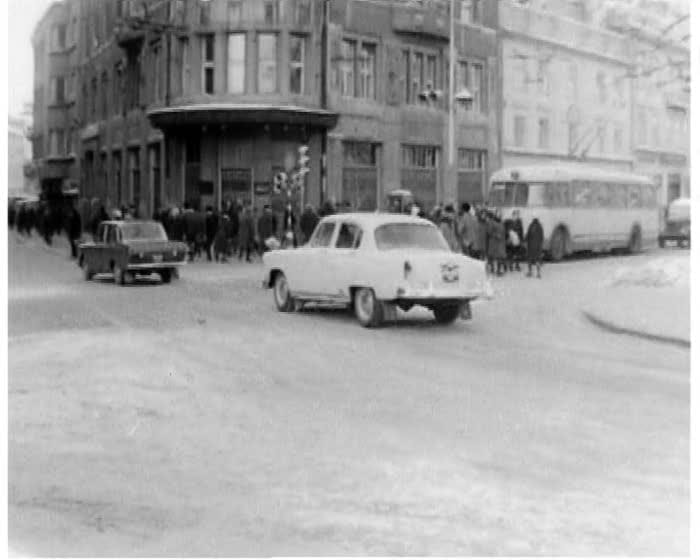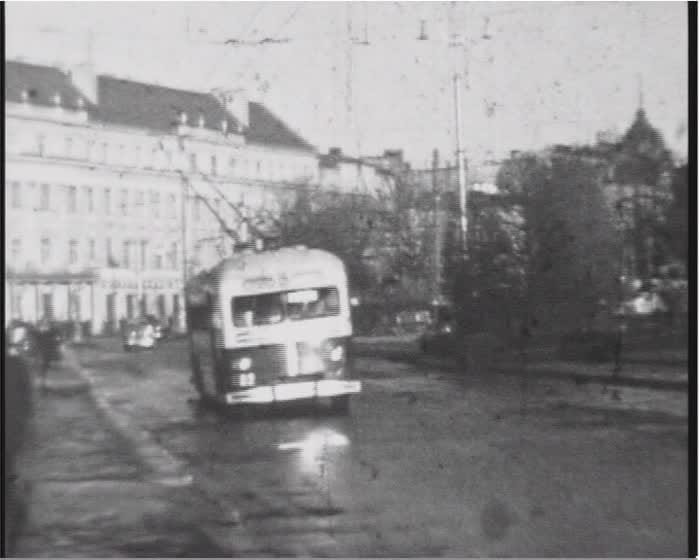Radio Communication: A 1959 TV Story by Lviv television
A 1959 TV story filmed for Lviv Television’s Lvivska Nedilia (Lviv Week) (№19) captures the early years of Lviv television and depicts the Soviet modernization of the city. Although the sound is lost, the visuals effectively narrate the story of public transport operations and how remote communication enabled quick responses to breakdowns, preventing disruptions in the public transport infrastructure. In the context of Lviv at the time, the introduction of the trolleybus was a significant symbol of Soviet modernization. Previously, the city only had a tram network. The new trolleybus routes connected the historic city center with the outskirts, where large enterprises and working-class neighborhoods were located. This report highlights...



A 1975 news report made for Lviv television describes the use of the ASUP (Avtomatyzovana systema upravlinnya pidpryjemstvom – Automated Enterprise Management System) at the Lviv Electron plant, one of the largest TV manufacturers in the Soviet Union. Developed in cooperation with the Kyiv Institute of Cybernetics between 1964 and 1969, the system employed an electronic computer to perform calculations and record production data, marking the first implementation of its kind in the Soviet Union. The story emerged during a period of technological optimism in Soviet state policy, with the fields of cybernetics and computer engineering having developed over nearly two decades. By 1967, more than 500 institutions and tens of thousands of people were working on cybernetic issues, with half of them focused on economic cybernetics (Peters, 69). Although several projects involving the use of computers in enterprises had been completed by that time, expectations about their future potential were tempered by numerous challenges. These included insufficient computing power, a lack of data for computing, political and economic obstacles to scaling such systems, and resource scarcity during the late socialist period and within the context of a planned economy. With the audio narration for this story lost, it is assumed that the title refers to the broader context: the potential for using the ASUP was seen to be greater than its actual use in production at the time. This discourse on the underutilization of computing technology’s potential is corroborated by archival documents and press reports from that era. “We need to convince people of the usefulness and benefits of using electronic computing. It is still dead and cold without being used in production management,” [speech in Russian – trans. ed.] said Stepan Petrovskyi, director of the Lviv Television Plant, when the Electron party committee listened to a report by the head of the Information and Computing Center in early 1967. This meeting occurred against the backdrop of the implementation of the first stage of the ASUP, which was scheduled to be handed over to the commission later that year (DALO, 568/71/12). Petrovsky’s appeal and the ensuing discussion illustrate how the system and electronic computing were perceived at the enterprise when it was nearly operational. Moreover, the Electron plant played a key role in popularizing such systems, and the enterprise was tasked with developing similar systems for other enterprises and various fields, including public transport management in the city.